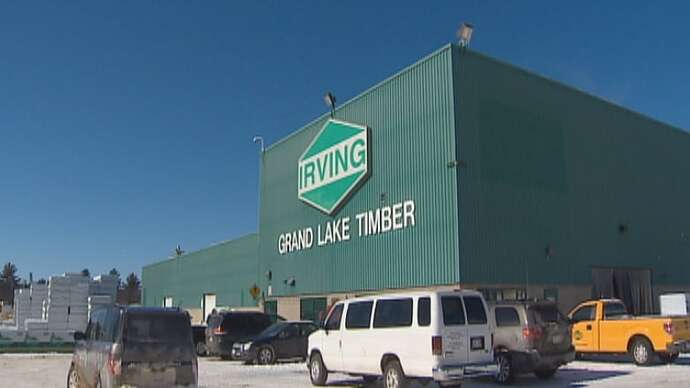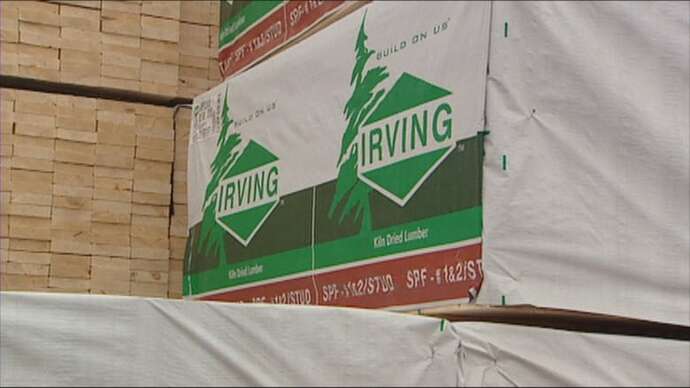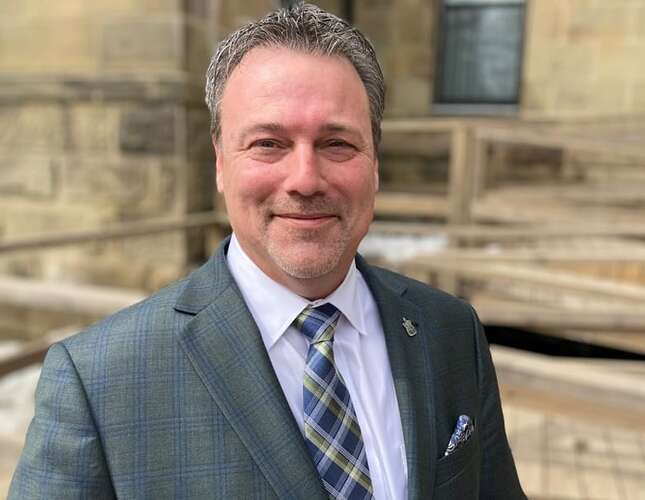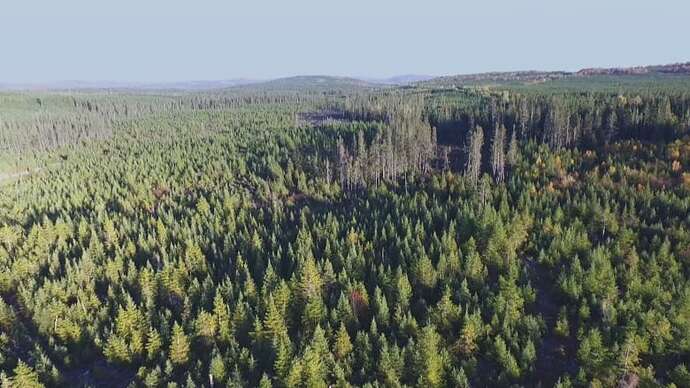New Brunswick to cut timber royalties charged to forestry companies up to $50M
Fees to cut lumber-quality softwood dropping 46%

Robert Jones · CBC News · Posted: May 01, 2023
Multiple forestry companies cut wood on publicly owned land in New Brunswick. J.D. Irving Ltd. is the largest and takes just under half of the public wood that is turned into lumber. (CBC)
Seven months after raising royalty rates on trees cut by industry in provincially owned forests, the New Brunswick government is proposing up to $50 million in reductions, with some rates falling all the way back to where they were a decade ago.
It’s a move Linda Bell wasn’t expecting and doesn’t like.
“I really couldn’t believe that it dropped that much,” she said.
Bell, general manager of the Carleton Victoria Wood Producers Association in Florenceville, says lower royalty rates reduce revenues to the province, but they also make it difficult for private sellers of wood to get decent prices for what they cut.
Linda Bell represents independent woodlot owners in western New Brunswick and says the province reducing the royalties it charges for wood cut on public land undercuts smaller private sellers. (Submitted by Linda Bell)
“The more cheap wood that the mills have from Crown, the less incentive they have to buy our wood,” said Bell.
In a posting on the province’s Public Review of Draft Regulations website last week, the Department of Natural Resources and Energy Development listed several proposed changes to timber royalties that are charged to New Brunswick forestry companies.
The most significant is a 46 per cent reduction in charges for softwood sawlogs and studwood used by New Brunswick sawmills to manufacture both high and low grades of lumber.
Based on current royalties and historical volumes cut on public land, the price drop will likely cost the province and save forest companies $50 million in fees this year.
The department is asking for public comment on the changes but did not respond to a series of questions about them last week.
New Brunswick raised the royalty rates on publicly owned timber for the first time in seven years last September in a belated, but heavily promoted effort to profit from two years of record lumber prices.
New Brunswick forestry companies saw their revenues from wood manufacturing increase by more than $1 billion when lumber prices surged. New Brunswick raised its timber royalties only as prices fell and is now retracting most of the increases. (CBC)
“We’ve instigated an increase for this year, a fairly significant increase,” Natural Resources Minister Mike Holland told CBC News last summer in one of a number of interviews announcing the higher fees.
In 2021, New Brunswick wood manufacturers, mostly sawmills, reported a record $2.6 billion in sales, $1.2 billion more than two years earlier on similar amounts of production.
That helped convince the province it should charge more for trees the mills were using, but the financial bonanza around lumber had largely fizzled by the time royalties were finally raised in the second half of 2022.
-
Delays in boosting timber royalties saved N.B. forest companies millions
-
N.B. companies with forest properties on both sides of U.S. border paying higher taxes in Maine
With lumber prices now into more normal ranges, the province has decided to roll back royalties as well.
But unlike the increases, which took effect last September after months of deliberation and the 60-day waiting period observed before changes in fees are normally implemented, reductions will be faster than immediate. They are to take effect retroactive to April 1st.
That irks Bell, who said the speed at which royalty rates are being cut is in stark contrast to the indecision and delays that preceded raising them.
“They certainly didn’t put the rates up very fast when the prices went up, but they sure put it down fast when the markets aren’t as good,” said Bell.
“It’s typical of what the government does. I am just astonished at the rates that the government uses for this taxpayer asset.”
Natural Resources and Energy Development Minister Mike Holland publicly announced when timber royalties were increasing last summer, but his department did not respond to questions last week about plans to cut them. (Jacques Poitras/CBC)
New Brunswick forestry companies cut a variety of trees of differing values from publicly owned land every year.
The most lucrative are spruce, pine and fir trees large and straight enough to be cut into lumber. In a typical year, companies cut three million cubic metres of softwood for sawmill use from public land.
About 850,000 cubic metres of those amounts are softwood sawlogs, which carry a current royalty of $40.60 per cubic metre. That was raised from $31.09 last year, but is now proposed to fall to $21.83.
Royalties on softwood sawlogs in New Brunswick have not been that low since 2012.
That is causing some confusion in the forestry sector, since higher royalties were meant to help finance a new private woodlot sustainability fund, announced by the province six months ago, that is supposed to help smaller private owners of forests manage their lots more efficiently.
New Brunswick companies cut millions of trees annually from publicly owned forests and in exchange pay the province royalties. (Radio-Canada)
Kim Jensen, general manager of the Carleton-Victoria forest products marketing board, said she doesn’t know if the fund is still to be paid for by royalty rates or some other surcharge or mechanism the province hasn’t explained yet.
“We’ve heard nothing. It’s been dead silence,” said Jensen.
Not all rates are declining, however.
There is a proposed 34 per cent increase in poplar and hardwood pulpwood royalties. Based on traditional volumes, that could add $2.2 million in revenue to offset some of the reductions.
The public has until May 24 to comment on the proposed changes.




